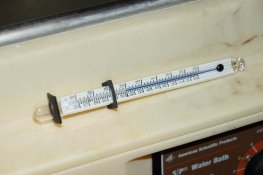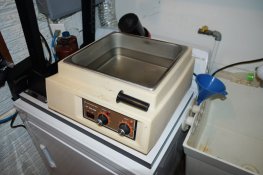largeformat65
Member
- Joined
- Jun 22, 2012
- Messages
- 27
- Format
- Multi Format
Can anyone provide a suggestion on a good thermometer for use in color film development? I have been doing black and white for 30 years and just starting to explore doing my own E-6 at home. I know temperature control and accuracy is critical so I wanted to make sure I got a good thermometer.
Thanks
Thanks












